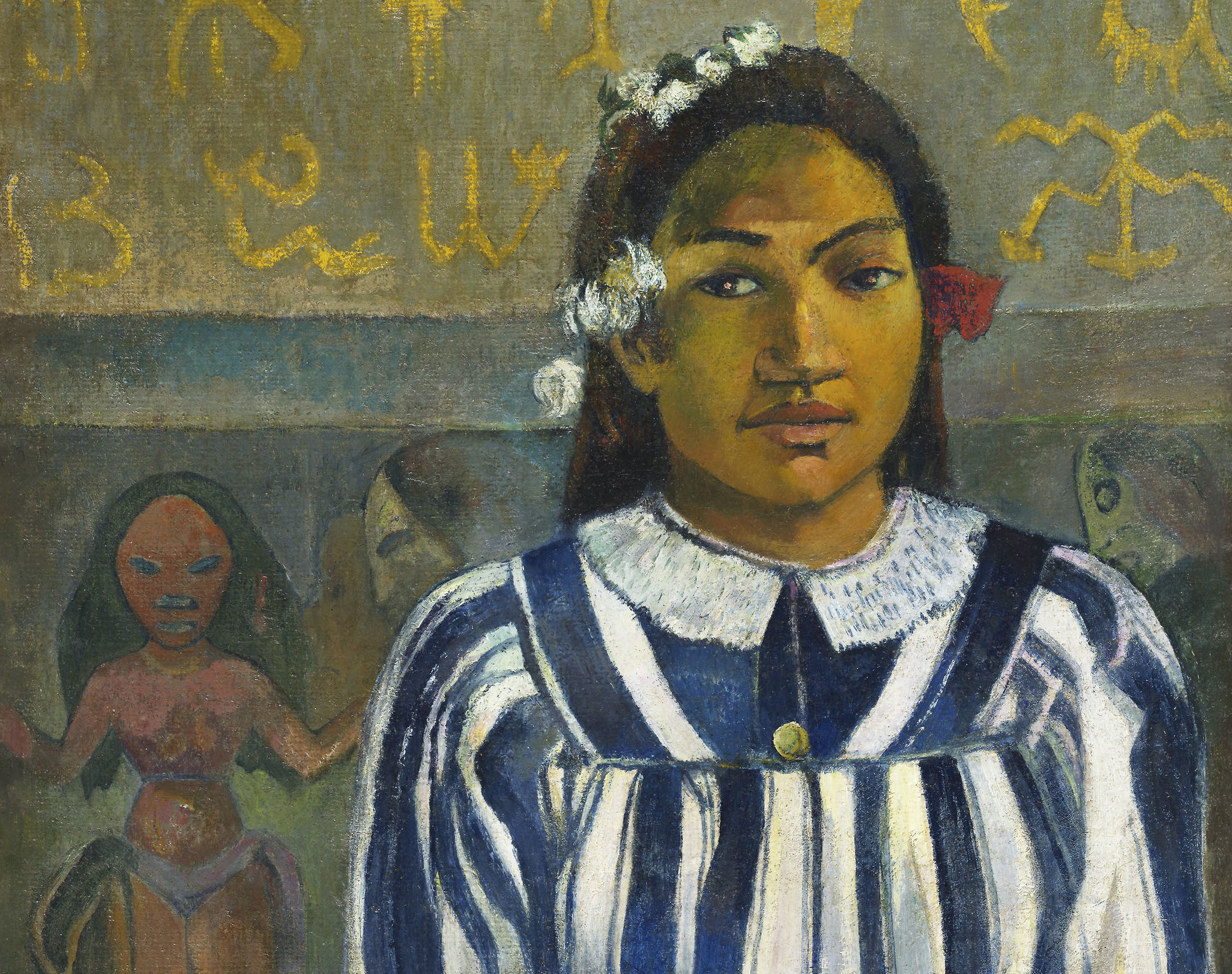
When director Maureen Bharoocha sent Rita Moreno the script for the horror-comedy film “The Prank” the EGOT winner had a few requests before signing above the dotted line.
“She read it over a weekend and was like, ‘I have two questions before I sign on to say yes,’” Bharoocha recalled to RogerEbert.com ahead of the film’s March 15 release. “‘Can I smoke a cigarette? And can I wear leather pants?’ And I was like, ‘A hundred percent you can do that.’ It’s not often that you get your first pick.”
And if Rita Moreno as a cruel, cigarette-smoking and leather-pants wearing physics teacher isn’t enough of a reason to watch “The Prank,” then the plot, which is about Moreno’s students falsely accusing her of murder, will be.
As a viewer, perhaps the biggest joy of the schoolyard-hijinks-gone-wrong film is that the 92-year-old actress seemed to be having so much fun being bad.
“And she’s never played anything like this,” Bharoocha continued. “I was thinking, maybe if we can get her the script, she’d be like, ‘Oh, I want do something that I’ve never done before,’ and it could be enticing in that way.”
And the rest, they say, is history. The film premiered at SXSW in 2022, and Moreno’s turn in the campy, genre-bending story was met with applause.
For this year’s Women Writers Week, RogerEbert.com spoke with Bharoocha via Zoom about casting and directing the legendary actress in the “part comedy, part thrills” drama, the gamble of mixing genres, and the “zigzaggy” career path that has led her to SXSW and beyond.
Hannah Loesch: I think a good place to start would be the origin story for “The Prank.” How did you become attached to the story, and how did you get EGOT winner Rita Moreno to star?
It kind of happened in two different ways. I got this script written by Rebecca Flinn-White and Zak White and it just kind of leapt off the page for me. It was just so much fun and I hadn’t read anything like it. And so often as a director, when you read other people’s scripts, it’s like, do I connect with this? No. But something about their script was just so exciting. I immediately could visualize it and I kind of made it my own in my head. And so I was like, Oh, I really wanna direct this movie. And then I had always wanted to work with Rita Moreno. She’s a legend and an EGOT and just somebody who I’ve admired for so long… So I kind of kind of put my spin on it and we sent it to Rita.
Cailin Loesch: Tell us about Rita Moreno as a villain in this story. When I first read about “The Prank,” I just kept picturing her as this Cruella De Vil–type character who targets children instead of dogs. [All laugh] That could not be accurate. I assume she made the role her own.
One thing that I think we can all relate to is having tough-as-nails-type teachers who are really hard on you. I had Mrs. Jordan, my seventh-grade nemesis, who I thought was always a little harder on me than everybody else and picked on me. And when you’re young, you don’t realize that sometimes it’s because they see more in you, so they’re tougher on you. The character of Mrs. Wheeler, that’s how I approached her with Rita: She’s a tough teacher who loves teaching and kind of loves the idea of punishing her students to make them better. She takes a little satisfaction from that. That devilish glee from really being tough on your students was where we drew from.
HL: At least she means well!
CL: I love how you mentioned seventh grade, because that’s when I had one of my worst mean teacher experiences. I asked my teacher for help on a math problem and she literally said to me “Go ask your sister.”
HL: And Cailin was like “My sister’s not a math teacher.” [All laugh]
CL: I don’t know if that was constructive. I think I’d probably rather have had Mrs. Wheeler.
HL: People have tough bosses, too! You get it your whole life.
Right! I think we all can relate. But Mrs. Wheeler is kind of preparing students for life’s lessons.
CL: I like the idea that it’s the teacher trying to make you better as opposed to just being out to get you. If you only saw the character in this movie from the student’s perspective, you might not know her intentions. But how do you convey them to the audience?
That’s part of the fun of the movie. You don’t really know what her intention is. What’s great is it’s part comedy and part thrills. Like, how does this prank unravel? How does it make her upset? What are the things that they discover? Who is telling the truth? And in this age of social media, it’s like, when do things go too far and what will people do to get revenge on one another?
HL: So, we know she had her leather and her cigarette, but is there a side to Rita Moreno as an actor that you saw in this role that you hadn’t seen before? She’s obviously had such a long and storied career. What in the movie do you think is going to make audiences go “I didn’t think that I would ever see Rita Moreno in a role like this.”
I think sometimes people forget how long and layered her career has been. Some people are probably more familiar with her from “One Day at a Time” and “West Side Story” than “Oz.” She has such a deep well to draw from that she was able to kind of pivot and layer Mrs. Wheeler in a way that’s not one note. She does have this exterior life that Rita is bringing to the role. What was really exciting is that normally we see our teachers in one way in the classroom, but we do get to see the many sides of Mrs. Wheeler throughout this movie.
CL: Do you feel like the Rita you met on day one, when you didn’t know her yet, is the same as the Rita you know now? Do you see her differently after getting to work so closely with her for that extended period of time?
I do, but I think actually what it was is that my love and affection and my admiration for her just grew. She just loves movies. Every single thing that we were doing on set, whether it was doing a silly little gag with a flag or sitting on an apple box doing lines off-camera, she was willing to do. And for somebody who’s 92 and who has been in this industry for as long as she has, the fact that she still has such a love and appetite for making movies was really inspiring. It elevated everybody’s performance across the board. We had Connor and Ramona who were just so incredible. Everybody was on their A game. And then getting to bring Keith David in—how excited he was when he was doing scenes with Rita and two of them throwing the ball back and forth—made me excited. It was an energy that we were feeding off of. When Rita steps on set, it kind of changes the dynamic. There is such a reverence.
HL: How do you think people are going to feel as the credits are rolling, as they’re leaving the theater? What do you think people will from it as it relates to the digital age, the age of social media that we live in?
One, I hope they stay for the credits, ’cause we have a bunch of fun bloopers from the movies. You get to see how excited we were and how much fun we had on set, truly. I hope they just have a good time. They get to sit in a movie theater, which is so rare now. The movie kind of examines what we do on social media, because it is so much a part of our lives. We can get kind of out of control. You can’t really believe anything you see now. And we made this movie before everyone was talking about artificial intelligence, so it’s even more of a complicated problem now.
CL: The premise of the movie, students playing a prank, is an age-old tale. But at the same time, this concept would’ve been completely different 50 years ago because it wouldn’t involve social media.
HL: If John Hughes directed it, it would’ve been a different movie. Still good, but very different. [All laugh]
A dark John Hughes movie. I love it.
CL: You said that when you were attached to direct the movie, you kind of put your own spin on it. What vision did you bring to the script once it was finished and after you became director?
One of the big shifts that I had is that originally the script starred two boys, two best friends. And I think one of the things that we don’t get to see enough in movies is platonic [boy and girl] best friends in high school. So often they’re paired as a love interest. Connor [Kalopsis] was already attached to the script when I came on. So we had an open call for men and women to play his counterpart. And once Ramona Young’s tape came in, it was clear that she was the only choice. I also really love mixing genres, taking a comedy and a thriller and kind of walking that tightrope. It was definitely me infusing my sensibilities in comedy and my sensibilities in the horror and thriller spaces and making that cohesive. And I loved that we made Mrs. Wheeler a physics teacher, a woman in STEM. The peanut gallery is another kind of thing that I think is always fun. We have a lot of people on the sidelines discussing what’s happening during this prank.
CL: Do you feel that as a director your style is different depending on the project and the actor? Do you feel like you’re the same director on each project that you work on?
Hopefully I’m the same person on every set in that I’m collaborative. I think, especially when you’re playing in the comedy space, anybody can pitch and a good idea can come from anywhere. I want to be able to have the vision of what I want but be open to hearing a new idea, a new pitch, or a new take on something that I can make my own or I can fold in. The way I see movies is that the script is our baseline. We need to be grounded with one foot in reality. I want to make sure that things feel authentic so that we can go heightened in comedy and thriller. You can go high if you have your foot planted on the ground. You can let somebody explore a scene, let them kind of go in a different direction, as long as we can come back to the script. That’s what I really love to do when I direct, whether that’s comedy or drama or thrillers or horror. Then everybody owns a piece of the movie and there’s so many fingerprints all over it, contributing fun things, little Easter eggs. That’s such a big part of making a movie.
CL: Your sets sound like a dream!
HL: And I think it’s really cool that you started as a segment director on “Jimmy Kimmel Live!” We have a lot of friends who graduated in film, TV, and communications and are working as production assistants and producers and want to move into directing their own films. How did you become the director you are today?
Everybody wants to have that story where you had your movie go to Sundance or SXSW and suddenly you’re an ingenue. And that was not my path. I have a zig-zaggy path. I did a little bit of everything, a jack-of-all-trades. But that experience gave me my reps! I did the hours, I put in the time, I can pivot, I can work fast, I can work on a dime. “Jimmy Kimmel Live!” allowed me to work in a high-pressure, fast-paced environment where you have to trust your gut while also working in someone else’s comedic voice. Ultimately, I knew that I really loved working with actors and telling stories. So that’s why I left to do features and episodic. I did over 30 shorts before I got Kimmel. I did two thrillers for Lifetime. I did stuff for UCB and College Humor. I did a little bit of everything! Now, I’m trying to hone all of those skills in my own movies and bring a little bit of everything I’ve learned along the way. So I’m really grateful that I have a zig-zaggy path that I can pull all of my experience from.




